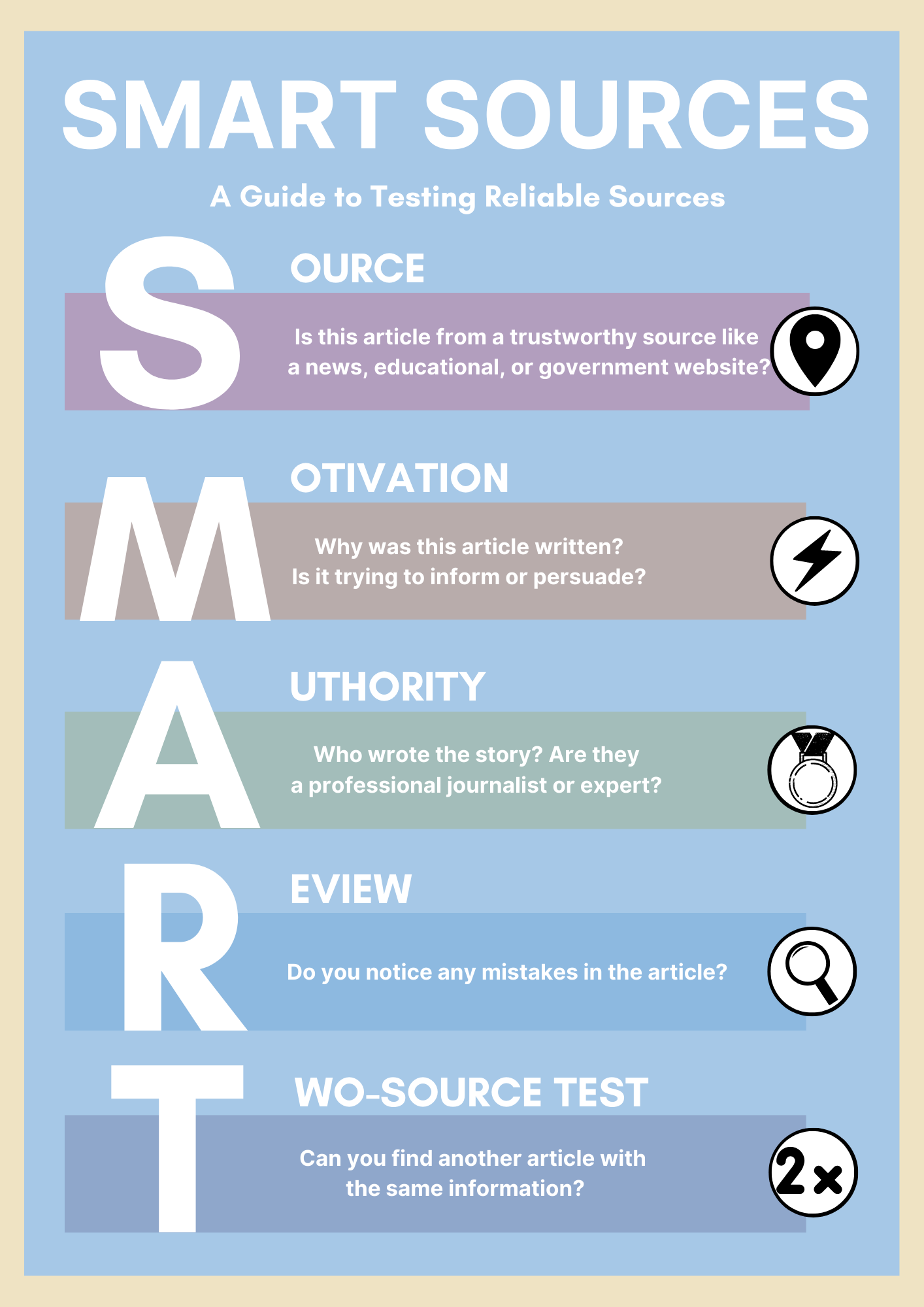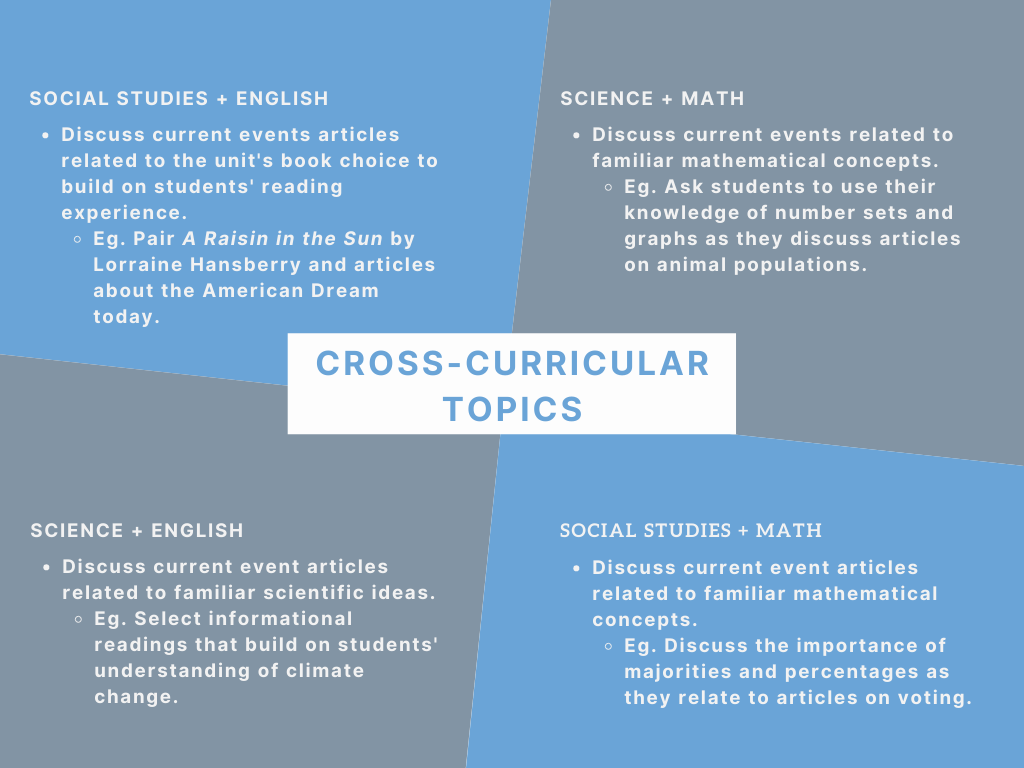If you’ve set up norms for respectful discussions and prepared for misunderstandings, you’re off to a good start. But students will need more support to think about and meaningfully discuss current events. This lesson will focus on best practices to help students access, engage with, and navigate challenging discussions.
Discussing Current Events in the Classroom
Supporting Discussions
Objectives:
- Learners will be able to explain the importance of multiple means of access and student choice in the classroom.
- Learners will be able to identify necessary and valuable background information to support discussions.
The Importance of Reliable Information
According to a 2020 Pew Research Poll, Americans who rely on social media for information (almost 20% of US adults) are less informed, less likely to vote than those who rely on other news sources, and more likely to encounter false information. With students becoming increasingly engaged in social media, they are likely to experience these same issues. Luckily, including current events in education can help. Preparing quality readings for your students gives them access to accurate, valuable information they need to stay informed and fight misinformation.
To ensure that your current events readings are objective, consider checking a media bias guide like the Ad Fontes Media Bias Chart to get a general idea of the quality of news outlets for current events articles. These charts visually represent a news outlet's political biases and focus on fact-based or opinion-based reporting. These tools aren’t a perfect test, but they can give you a good idea of whether your source is based on straightforward, fact-based reporting or not.
But these tools are just the beginning. There are several methods of checking the reliability of a source. The University of Washington recommends the SMART method, which is an excellent resource for teachers and students. Carefully read the SMART method guide below before you look for the next reading you bring into your classroom to assess how trustworthy its information is. When you’re ready, introduce the method to your class and let them practice assessing news sources for themselves. The critical thinking and research skills involved in the SMART method and others like it can serve your students for years to come.

Providing Background Knowledge

Once you have a good foundation of facts for your students, you need to consider the background knowledge the reading requires. View the video below to get a better idea of why background knowledge is key to a good discussion.
When identifying background knowledge, it’s easy to give too much or too little. To try and find the right balance, think about the information that is absolutely necessary to understand the topic and present that to your students first. You can address other questions as they arise as long as students understand enough to get started. Carefully review the example below, then try for yourself in the following Short Answer Question.
Short Answer Question
Keep in mind that you’re not the only teacher providing your students with background knowledge. You can let students make the most of their knowledge by discussing current events that connect to their other classes. Consider the examples below.
Finally, once students have the background knowledge they need, give them a chance to think about it before diving into reading or discussion. Check out this Pre-Discussion Activity document.
You should feel proud when you’ve found dependable sources and summed up the necessary background information for a discussion. You’ve gone the extra mile to support your students and give them the tools to succeed. But just having a good reading and a little context isn’t enough for every student. What if the reading is too complicated for some of your class? What if you have students who understand the material but don’t know how to explain their thoughts? What happens when students who aren’t interested want to tune out?
Those scenarios are going to be common and can be very stressful, but there are frameworks you can implement to address these situations. We’ll cover one in just a moment. Now, you may ask yourself, “how much work do I need to do to make this worth it?” Try not to feel overwhelmed. Remember, everything you do to support your students’ learning and growth has value, even if you don’t reach every goal you set for yourself. Then, try to challenge your thinking. Instead of thinking of your preparation as work for one activity, think of it as part of a method to improve the learning experience for everyone. When you find quality sources, review key background information, and help your students share what they know, you’re reshaping your classroom to benefit the entire class. You can improve your methods even further by applying the Universal Design for Learning in lessons.
The Universal Design for Learning (UDL) is a wonderful tool for planning instruction that supports deeper understanding and involvement in all students. UDL has three central components: Multiple means of representation, multiple means of expression, and multiple means of engagement.

Representation refers to the way information is presented in a lesson. Because students have diverse learning preferences and needs, it is important to offer supports that allow students to access the information in different ways. For example, consider choosing sources that have multiple formats to fit students’ preferences (such as a TEDTalk, which offers videos to watch or written transcripts to read) and language aids to help readers at different skill levels engage with the same ideas (such as CommonLit.org's article translation feature).

Expression refers to the way students communicate what they know. While spoken contributions are vital to a discussion, you may also want to consider non-verbal contributions, such as collecting written questions from students you can read anonymously during a discussion. In that model, even students who don’t speak are still making contributions. Socrative.com, for example, offers options to submit questions and responses, anonymously or not, which the class can view together.

Finally, engagement refers to students' motivation to interact with learning. You can foster this engagement by finding a variety of readings related to the same subject and giving students a choice in the reading they complete to prepare for a discussion. For example, if you are discussing good citizenship, providing articles about popular athletes, musicians, and actors giving back to their communities allows students to choose a reading based on their interests and role models.
When you supply multiple sources (or encourage students to find their own), you offer students chances to follow their interests, select articles better suited to their reading level, and avoid content they may find upsetting.

There’s so much more to explore on the topic, but as you finish, keep in mind the two most important things you can provide your students in these discussions: structure and quality information. Establishing clear conversational norms gives conversations structure and promotes curiosity, respect, and empathy no matter the subject. Giving students appropriate background knowledge and educational resources they can (and want to) interact with at their level empowers every student to become responsible for their learning. When you use your experience and skills to create classroom discussions based on these two ideas, you’ll support deep learning and build powerful classroom experiences.
